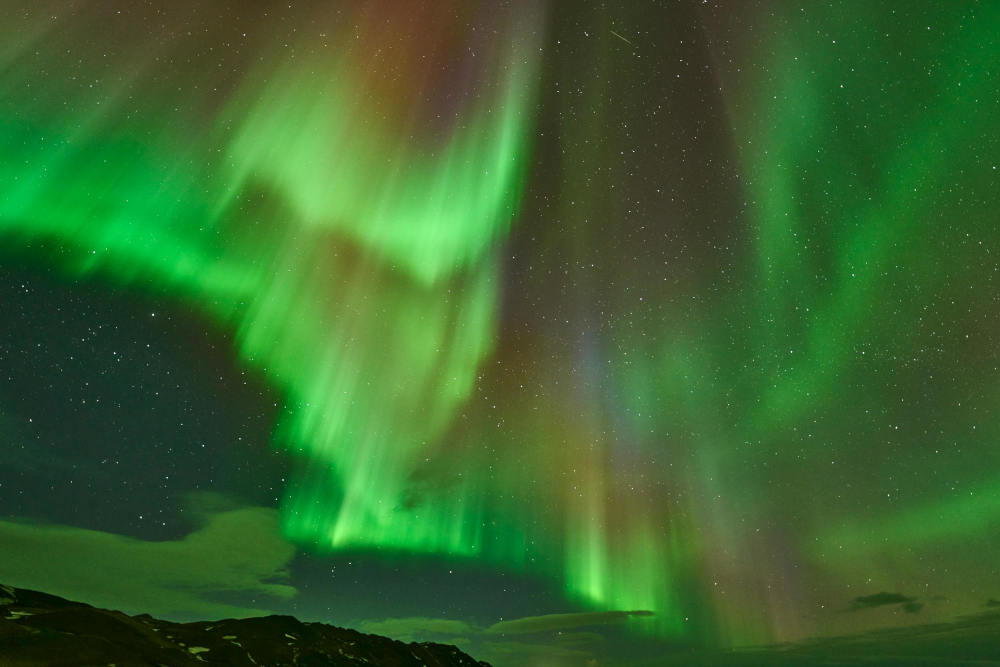
Human curiosity is a force that knows no boundaries. From early myths to cutting-edge quantum physics, we’ve always asked: What lies beyond what we can see? In the last few decades, concepts like the multiverse, omniverse, and megaverse have taken center stage in both science and speculative philosophy. These terms reflect our growing realization that reality may be far more complex than our single universe. But just as we think we’ve reached the pinnacle with the “megaverse,” a new question arises: What lies beyond the megaverse?
This article explores that profound question through scientific theory, metaphysical speculation, and philosophical thought. While there are no definitive answers—yet—this journey pushes the boundaries of imagination and understanding.
Panaprium ist unabhängig und wird vom Leser unterstützt. Wenn Sie über unseren Link etwas kaufen, erhalten wir möglicherweise eine Provision. Wenn Sie können, unterstützen Sie uns bitte monatlich. Die Einrichtung dauert weniger als eine Minute und Sie werden jeden Monat einen großen Beitrag leisten. Danke schön!
Understanding the Megaverse
Before we go “beyond,” we need to know what we're starting with. The megaverse is a term used to describe a massive structure that contains multiple omniverses. It exists above:
-
The Universe – Our observable reality.
-
The Multiverse – A set of parallel universes with varying laws of physics.
-
The Omniverse – The totality of all multiverses, timelines, dimensions, and realities.
The megaverse, then, represents a hypothetical structure that includes countless omniverses—each with their own unique physical laws, dimensions, timelines, and existential frameworks. It's a conceptual leap from even the broadest known theories in mainstream physics.
So, if the megaverse contains all possible omniverses, can there be anything beyond it?
Surprisingly, many thinkers suggest the answer might be yes.
Possibility 1: The Hyperverse – A Realm of All Megaverses
One possible layer beyond the megaverse is the hyperverse—a term used in both speculative cosmology and fictional worldbuilding. A hyperverse would include countless megaverses, each with entirely distinct sets of omniversal laws, conceptual structures, and foundational principles.
Here’s how this model might be structured:
-
Universe → Planets, stars, galaxies
-
Multiverse → Sets of parallel universes
-
Omniverse → Totality of all multiverses
-
Megaverse → Network of omniverses with shared existential laws
-
Hyperverse → A system of megaverses, possibly infinite in number and type
In this speculative hierarchy, each megaverse might be completely foreign to the others—running on different metaphysical “codes,” inaccessible even to the highest beings in adjacent structures.
The hyperverse concept is deeply speculative but provides a way to imagine how realities could scale infinitely—like Russian nesting dolls, where each layer encompasses an entirely new framework.
Possibility 2: The Source Field or Absolute Reality
Some metaphysical and spiritual traditions argue that beyond all structured realities—megaverses, omniverses, or hyperverses—there exists something non-structured, something timeless, formless, and beyond comprehension. This is often called:
-
The Source
-
The Absolute
-
The Void
-
The All
-
Brahman (in Vedanta)
-
Ein Sof (in Kabbalah)
In this view, the megaverse and everything within it are manifestations—temporary and impermanent expressions—while the source is the permanent, unchanging foundation.
Rather than being a place or a realm, the Source is thought to be a state of pure potential, outside time and space, beyond all logic, duality, and form.
Philosophically, this suggests that everything we can imagine—even a chain of infinite megaverses—is ultimately nested within a single infinite awareness or field of being. Nothing is truly “outside” it, because it is not limited by any form of containment.
Possibility 3: The Consciousness Continuum
A growing number of physicists, philosophers, and mystics are proposing that consciousness itself may be fundamental to existence—not matter or energy, but awareness. In this view, what lies beyond even the megaverse is not more “stuff” or more “layers”—but rather a higher order of consciousness.
Here’s how this concept unfolds:
-
Our universe contains sentient life.
-
The multiverse may contain alternate selves or consciousness expressions.
-
The omniverse contains all expressions of thought, will, and intention.
-
The megaverse may represent all systems of consciousness-based realities.
-
Beyond that lies a pure, undivided consciousness—one that transcends individuality, time, and even being.
This aligns with ideas from:
-
Advaita Vedanta, which teaches that the Self (Atman) is identical with the universal reality (Brahman).
-
Panpsychism, which proposes that consciousness is a fundamental feature of all reality.
-
Non-dual mysticism, which claims separation is an illusion, and all is One.
Here, the megaverse is a dream, and beyond it lies the Dreamer—the infinite field of knowing.
Possibility 4: Infinite Regress and the Eternal Climb
Another possibility is that there’s no end—just a continuous stacking of realities, each more complex and expansive than the last. This is similar to a fractal or a mathematical infinite series.
-
The universe is part of a multiverse.
-
The multiverse is part of an omniverse.
-
The omniverse is part of a megaverse.
-
The megaverse is part of a hyperverse.
-
The hyperverse is part of a transhyperverse…
And so on—ad infinitum.
In this model, reality is fundamentally recursive. There is no highest level because with every expansion of perspective, a new framework is born. This is sometimes called ontological infinitism—the belief that there is no final structure to reality.
This view aligns with some interpretations of mathematical logic, especially Gödel's Incompleteness Theorems, which suggest that any system complex enough to describe reality will always contain true statements that cannot be proven within the system itself.
So, whatever we consider the “final answer” will always leave room for a greater context.
Possibility 5: The Unknowable
Finally, it's possible that what lies beyond the megaverse is forever inaccessible to us. Not just technologically or practically, but fundamentally unknowable.
Why?
-
Cognitive Limits – Human brains are built for survival in a 3D world. They may not be equipped to comprehend 12-dimensional, non-linear, or non-dual frameworks.
-
Dimensional Barriers – Realities beyond the megaverse may operate in states where physical laws, perception, and logic break down.
-
No Reference Point – We only understand new concepts by relating them to existing ones. But what if the next realm has no analogy, no structure, and no language?
This is similar to a 2D being trying to imagine a 3D object. No matter how much it's explained, true understanding is impossible without transcending its own plane of existence.
In this view, the realm beyond the megaverse is not just uncharted—it’s inconceivable.
Why This Question Matters
Even though these ideas may sound abstract or fantastical, they hold deeper significance:
-
They reflect human evolution. The fact that we’re even asking “what’s beyond the megaverse” shows how far we've come in our understanding of existence.
-
They stretch the imagination. Thinking about these questions expands our minds and inspires new models of thought, science, and spirituality.
-
They remind us of humility. We may be part of something so vast and unknowable that the only honest response is awe.
-
They unite science and spirituality. Exploring these ideas often brings physicists and mystics to similar conclusions: everything may be connected, and consciousness might be key.
Final Thoughts
“What is beyond the megaverse?” is more than just a theoretical question—it’s a reflection of the deepest human impulse: to understand our place in the cosmos. Whether the answer lies in higher-dimensional structures, pure consciousness, the infinite mind, or an unknowable beyond, the pursuit itself expands the frontier of what it means to be human.
In the end, maybe the boundary between the known and the unknowable is not a wall—but a door.
And asking the question is how we begin to open it.
Suggested Readings & Sources:
-
Max Tegmark – Our Mathematical Universe
-
Brian Greene – The Hidden Reality
-
Nick Bostrom – Simulation Hypothesis
-
Ervin Laszlo – The Self-Actualizing Cosmos
-
Ancient texts from Vedanta, Taoism, Gnosticism, and Kabbalistic traditions
-
Research papers on panpsychism, non-duality, and multiverse theory
War dieser Artikel hilfreich für Sie? Bitte teilen Sie uns in den Kommentaren unten mit, was Ihnen gefallen oder nicht gefallen hat.
About the Author: Alex Assoune
Wogegen Wir Kämpfen
Weltweit-Konzerne produzieren in den ärmsten Ländern im Übermaß billige Produkte.
Fabriken mit Sweatshop-ähnlichen Bedingungen, die die Arbeiter unterbezahlt.
Medienkonglomerate, die unethische, nicht nachhaltige Produkte bewerben.
Schlechte Akteure fördern durch unbewusstes Verhalten den übermäßigen Konsum.
- - - -
Zum Glück haben wir unsere Unterstützer, darunter auch Sie.
Panaprium wird von Lesern wie Ihnen finanziert, die sich unserer Mission anschließen möchten, die Welt völlig umweltfreundlich zu gestalten.
Wenn Sie können, unterstützen Sie uns bitte monatlich. Die Einrichtung dauert weniger als eine Minute und Sie werden jeden Monat einen großen Beitrag leisten. Danke schön.































0 Kommentare